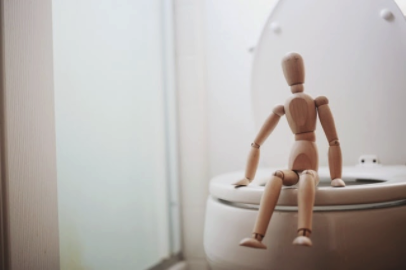
Some plumbing leaks are easy to detect, while others can remain hidden for months — if not years. In the long run, all of them will cost you water, money and potential damage to your fixtures and home. A leaky toilet isn’t always as obvious as a dripping faucet, but there are ways to reveal even those elusive toilet troubles that occur out of sight. Read on to learn how to tell if your toilet is leaking or contact our team at SBPHA/C for all your plumbing needs today.
Leaking Toilet: Causes
Toilets can develop internal or external leaks. Internal leaks — those occurring within the toilet’s enclosed system — may be more difficult to spot, as they don’t leave behind visual evidence.
Internal toilet leaks may stem from one of the following causes:
- Worn Flapper — The flapper in your toilet prevents water from moving from the tank into the toilet bowl when it’s not supposed to. A worn flapper may constantly allow water to leak through, which can increase water usage and utility costs.
- Flush Valve Assembly — If your toilet makes a dripping noise or seems to run constantly, it could indicate problems with the unit’s flush valve assembly. A faulty flush valve may cause water to continuously fill up your tank and enter the system’s overflow valve.
External toilet leaks can have the following causes:
- Cracked toilet bowl or tank
- Loose or worn toilet seal/collar
- Loose or worn connections
- Old/rusted pipes
External toilet leaks stemming from the causes listed above will typically leave behind visual evidence on or around your toilet. This may include pooling water and/or stains on the floor surrounding the base of a toilet. A cracked or worn toilet collar may also cause unpleasant odors to linger in your bathroom.
A note on condensation: Bathrooms tend to be the most humid spaces in our homes. Condensation may collect on a toilet tank and bowl following a shower or bath. This condensation may drip down and resemble a leak. Take note of when you notice water on or around your toilet to determine whether it is the result of condensation or a leak.
Hidden Toilet Leak: Flapper Valve
To check if water is leaking from the toilet tank into the toilet bowl, homeowners can purchase toilet tablets at a home improvement store. Toilet tablets are inexpensive and do not run the risk of staining your toilet. Simply place one in the tank once it has completely filled and stopped. After roughly 10–20 minutes, check to see if any color has made its way into the toilet bowl. If it has, you may be dealing with a faulty flapper valve. The same test can be performed with a few drops of food coloring, just be sure the product is safe to use and that it won’t stain your fixture.
Check your toilet’s flapper valve for build-up or debris and clean it thoroughly. If this does not solve the issue, you may need to replace the flapper valve.
Hidden Toilet Leak: Fill Valve
A faulty fill valve can cause water to enter the system’s overflow tube, triggering it to refill the tank. In some cases, this leads to dripping noises or the sound of the toilet constantly running, but it’s possible to have a leak involving the unit’s fill valve with no obvious evidence. A water leak sensor can be installed to alert homeowners when such a leak is detected, but a visual inspection can do the trick too. Simply wait until the toilet tank is full, then lift the lid and look for water flowing in the toilet’s overflow tube. If this is the case, your toilet is leaking and warrants attention.
Call SBPHA/C for Plumbing Repairs
Solution Based Plumbing, Heating, and A/C offers plumbing services including diagnosis, repairs, installations and maintenance. If you live in Montgomery, Bucks, Philadelphia, Delaware or Chester County, contact us at (215) 584-2098 for all your plumbing, heating and air conditioning needs.
